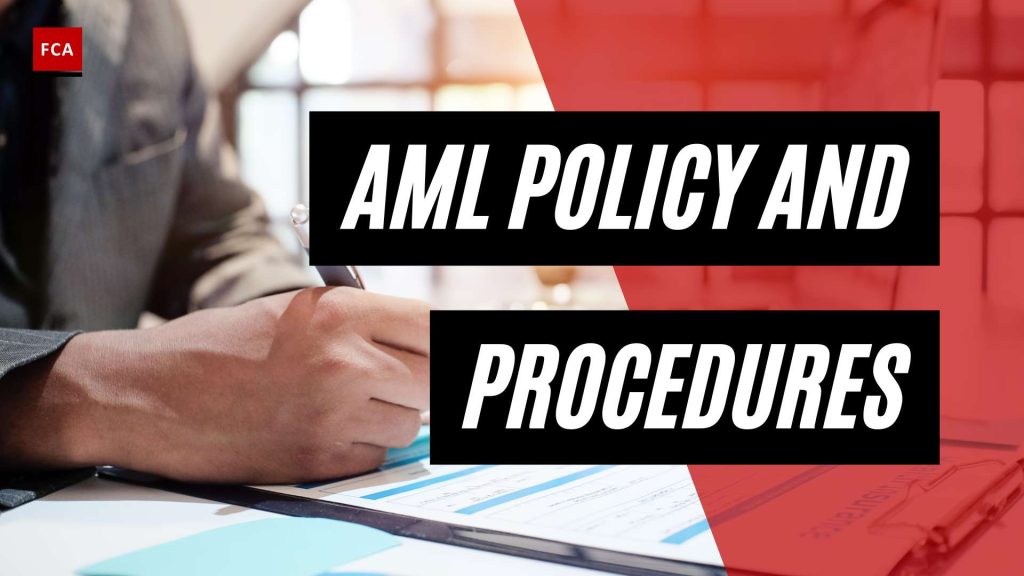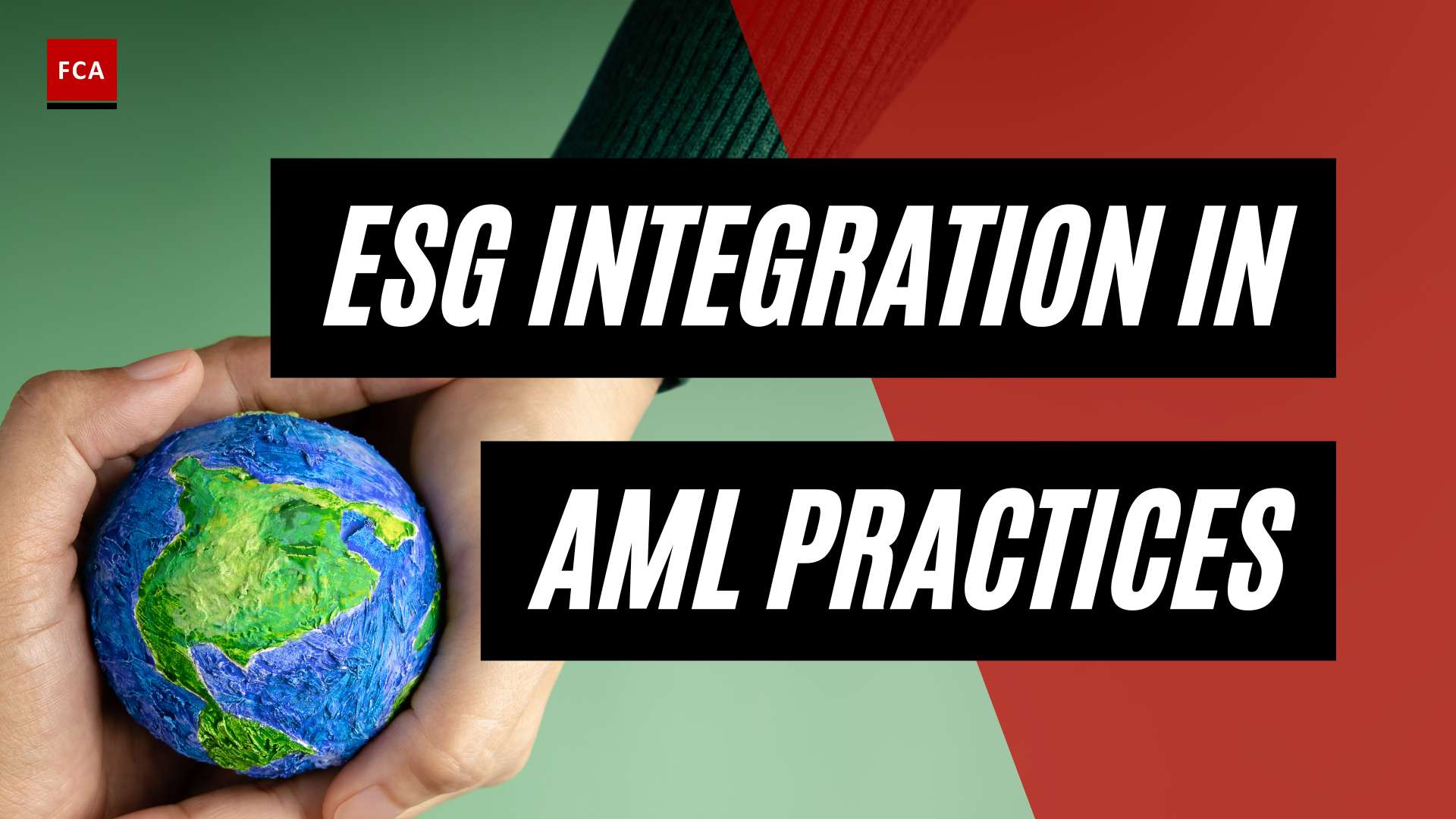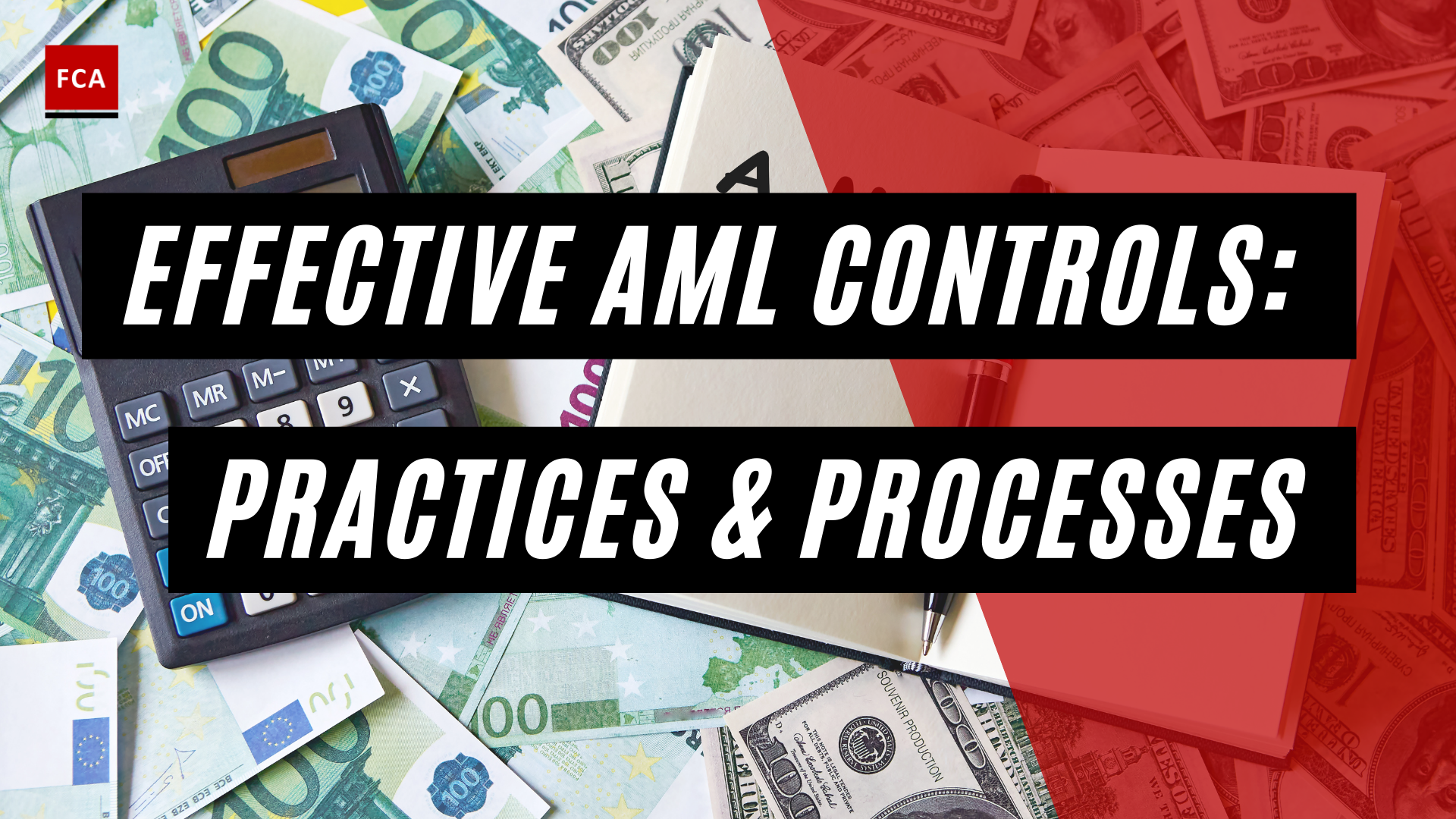Understanding AML Compliance Framework
To combat the pervasive issue of money laundering, banks, fintechs, and other financial institutions around the world are mandated to establish and implement Anti-Money Laundering (AML) compliance programs. These programs play a crucial role in safeguarding the integrity of the financial system and protecting against illicit financial activities. The European Union (EU) has introduced several AML directives, including the Fourth and Fifth Anti-Money Laundering Directives, to further strengthen AML measures (Flagright).
Importance of AML Compliance
The importance of AML compliance cannot be overstated. Financial institutions must remain vigilant in their efforts to detect and prevent money laundering and other financial crimes. An effective AML compliance program helps institutions identify and report suspicious activities, ensuring they remain compliant with regulatory requirements and uphold their commitment to ethical practices.
By implementing robust policies and procedures, financial institutions can create a culture of compliance at all levels of the organization. This proactive approach helps mitigate the risks associated with money laundering and promotes trust and confidence in the financial system (Flagright).
Key Components of AML Compliance Program
A comprehensive AML compliance program consists of several key components that collectively form a strong framework for detecting and preventing money laundering. These components include:
-
Detecting Suspicious Activities: Financial institutions must establish systems and processes to identify and investigate transactions and activities that may be indicative of money laundering or other illicit financial behavior. This involves monitoring customer transactions, conducting due diligence, and implementing transaction monitoring systems.
-
Comprehensive Policies and Procedures: Clear and well-documented policies and procedures are essential for an effective AML compliance program. These guidelines outline the institution’s approach to AML compliance, including customer due diligence (CDD) processes, reporting suspicious activities, and record-keeping requirements.
-
Risk Assessments on Customers: Conducting risk assessments on customers helps financial institutions determine the level of risk associated with each customer and tailor their AML measures accordingly. This involves assessing factors such as the customer’s industry, geographic location, transaction history, and beneficial ownership.
-
Know Your Customer (KYC) Program: Implementing a robust KYC program is crucial for verifying the identity of customers, understanding their financial activities, and assessing their risk profile. This includes gathering essential customer information, conducting identity verification, and performing ongoing monitoring of customer transactions.
-
Independent Audits and Testing: Regular independent audits and testing of the AML compliance program are essential to ensure its effectiveness and identify any weaknesses or areas for improvement. These audits provide an objective evaluation of the institution’s adherence to AML regulations and help maintain a high level of compliance.
By incorporating these key components into their AML compliance programs, financial institutions can enhance their ability to detect and prevent money laundering activities, meet regulatory requirements, and protect the integrity of the financial system (Flagright).
To learn more about AML compliance, organizations can refer to resources provided by financial institutions regulatory authorities and explore third-party AML solutions, such as AML compliance software, to streamline their compliance processes (PayLynxs).
International AML Standards
In the global fight against money laundering and financial crime, international AML standards play a vital role in establishing consistent guidelines and regulations. These standards help ensure that financial institutions and businesses worldwide implement effective AML compliance programs. Two significant components of the international AML framework are the EU AML Directives and global regulatory bodies.
EU AML Directives
The European Union (EU) has been at the forefront of developing AML regulations to combat money laundering and terrorist financing. The EU has introduced several AML directives, including the Fourth Anti-Money Laundering Directive in 2017 and the Fifth Anti-Money Laundering Directive in 2020. These directives aim to enhance the EU’s AML framework and align it with international standards.
The EU AML directives require member states to implement robust AML measures, including customer due diligence (CDD), enhanced due diligence (EDD), and risk-based approaches to AML compliance. These directives also introduce new requirements, such as the establishment of beneficial ownership registers and the inclusion of virtual currency exchanges and custodian wallet providers in the scope of AML regulations.
Financial institutions operating within the EU must stay updated on the evolving EU AML directives and ensure compliance with the established requirements. Failure to comply with these directives can result in severe penalties and reputational damage.
Global Regulatory Bodies
In addition to the EU AML directives, various global regulatory bodies contribute to the development and enforcement of international AML standards. These bodies work towards establishing a unified approach to combating money laundering and terrorist financing worldwide.
One prominent global regulatory body is the Financial Action Task Force (FATF). The FATF sets international standards and recommendations for AML and counter-terrorist financing (CFT) measures. Its recommendations serve as a benchmark for countries and financial institutions in developing their AML policies and procedures. The FATF regularly updates its recommendations to address emerging risks and challenges in the financial industry (fatf recommendations).
Other regional organizations and regulatory bodies, such as the Financial Crimes Enforcement Network (FinCEN) in the United States and the Financial Conduct Authority (FCA) in the United Kingdom, also play essential roles in setting and enforcing AML standards within their respective jurisdictions.
Financial institutions and businesses operating globally need to be aware of and adhere to the AML standards set by these regulatory bodies. This includes implementing effective AML compliance programs, conducting ongoing risk assessments, and staying informed about changes and updates in AML regulations.
By following international AML standards, financial institutions and businesses can contribute to the collective effort in combating money laundering and protecting the integrity of the global financial system. It is crucial to remain vigilant, adapt to evolving regulations, and maintain a strong commitment to AML compliance to mitigate the risk of financial crime and its consequences.
Designing AML Policies and Procedures
To combat money laundering and ensure the integrity of the financial system, it is crucial for businesses to have well-designed AML policies and procedures in place. These policies address key components of an effective AML compliance program and help organizations meet regulatory requirements. Here, we will delve into three essential elements: customer due diligence (CDD), reporting suspicious activities, and record-keeping requirements.
Customer Due Diligence (CDD)
Customer due diligence (CDD) is a fundamental aspect of AML compliance. It involves gathering and verifying customer information to assess the potential risk of money laundering or other illicit activities. CDD measures typically include:
-
Identification and Verification: Financial institutions and regulated entities must establish the identity of their customers by obtaining reliable and independent documentation, such as government-issued identification, utility bills, or bank statements. Verification procedures ensure that the provided information is accurate and matches the customer’s identity.
-
Risk Profiling: AML policies should outline a risk-based approach to CDD, allowing organizations to categorize customers based on their risk levels. This enables businesses to allocate resources effectively and implement enhanced due diligence measures for high-risk customers.
-
Ongoing Monitoring: Continuous monitoring of customer transactions and activities is essential to identify any suspicious behavior or changes in risk profiles. Regular reviews and assessments help ensure that customer information remains up-to-date and aligns with the established risk levels.
Adhering to CDD procedures helps businesses mitigate the risk of being involved in money laundering or other illicit activities. It also assists in complying with regulatory requirements and screening customers against government-sanctioned lists, such as the US Treasury’s Office of Foreign Assets Control (OFAC) list (PayLynxs).
Reporting Suspicious Activities
AML policies must include clear guidelines for reporting suspicious activities. Financial institutions and regulated entities are required to maintain a robust system for detecting and reporting suspicious transactions or behaviors that may be indicative of money laundering or terrorist financing.
When suspicious activities are identified, employees should follow internal reporting procedures and promptly notify the designated compliance officer or the appropriate authority. These reports enable investigations and enforcement actions to be initiated when necessary, contributing to the prevention and detection of financial crimes.
Record-Keeping Requirements
Record-keeping is a critical component of an effective AML compliance program. Organizations must maintain detailed records of customer information, transactions, and other relevant data for a specified period. These records are crucial for audits, investigations, and regulatory compliance purposes.
AML policies should outline the specific record-keeping requirements, including the types of records to be maintained, the retention periods, and the security measures to protect the integrity and confidentiality of the information. By adhering to record-keeping protocols, businesses can demonstrate their commitment to transparency and accountability.
It is important to note that AML procedures should be tailored to the specific risks faced by each organization, considering factors such as its activities, client base, and geographic locations of operation (Investopedia). This customization ensures that the AML policies and procedures are effective and efficient in combating money laundering activities.
By implementing robust AML policies and procedures that encompass customer due diligence, reporting suspicious activities, and record-keeping requirements, organizations can enhance their AML compliance efforts and contribute to the overall integrity of the financial system.
Implementing an Effective AML Compliance Program
To effectively combat money laundering and ensure regulatory compliance, financial institutions must implement a robust AML compliance program. This program should incorporate key components such as risk assessment and mitigation, a Know Your Customer (KYC) program, and independent testing and auditing.
Risk Assessment and Mitigation
A crucial element of an effective AML compliance program is conducting thorough risk assessments. Financial institutions need to identify and assess the risks associated with their customers, products, services, and geographical locations. This allows them to focus their resources on higher-risk areas and implement appropriate controls to mitigate those risks.
By analyzing customer profiles, transaction patterns, and other relevant data, financial institutions can identify potential red flags and suspicious activities. Risk assessment helps in tailoring their AML measures to address specific risks and ensures a more targeted and efficient compliance program.
Know Your Customer (KYC) Program
Implementing a robust KYC program is fundamental to an effective AML compliance program. This process involves verifying the identity of customers, assessing their risk profiles, and obtaining relevant information to establish a clear understanding of their business activities and sources of funds.
A comprehensive KYC program includes verifying customer identities, conducting due diligence on beneficial owners, and assessing the purpose and expected nature of the business relationship. This enables financial institutions to detect and prevent the use of their services for illicit activities, such as money laundering and terrorist financing.
Independent Testing and Auditing
Independent testing and auditing play a critical role in evaluating the effectiveness of an AML compliance program. Financial institutions should engage third-party organizations to conduct regular audits and assessments to ensure that their risk assessment and KYC programs are properly implemented and functioning as intended.
These independent reviews provide an objective assessment of the institution’s AML controls and help identify any gaps or weaknesses in the compliance program. By addressing these findings, financial institutions can enhance their AML measures and strengthen their defenses against money laundering and other financial crimes.
By incorporating risk assessment and mitigation, a robust KYC program, and independent testing and auditing, financial institutions can establish an effective AML compliance program. This comprehensive framework enables them to identify and address potential risks, detect suspicious activities, and maintain regulatory compliance. To learn more about AML compliance regulations and requirements, refer to our article on AML compliance regulations.
Financial institutions can also leverage AML compliance software and AML compliance solutions to streamline their compliance processes and enhance their ability to detect and prevent money laundering. Additionally, ongoing AML compliance training and AML compliance certification for employees involved in AML roles further strengthen the institution’s compliance efforts.
To stay abreast of the latest industry standards and best practices, financial institutions can refer to regulatory authorities such as the FATF and local financial regulators. Explore our article on AML compliance controls for further resources and guidance in implementing a robust AML compliance program.
Training and Education for AML Compliance
In the field of anti-money laundering (AML) compliance, training and education play a vital role in ensuring that financial institutions and their employees are equipped with the necessary knowledge and skills to effectively detect and prevent money laundering activities. This section will explore the importance of employee training and the need for targeted training for AML roles.
Importance of Employee Training
Regular and comprehensive employee training is a cornerstone of a strong AML compliance program. Financial institutions need to provide their employees with the knowledge and understanding of AML regulations, internal policies, and procedures to recognize and report suspicious activities. By educating employees about the risks associated with money laundering and the methods used to conceal illicit funds, institutions can empower their staff to be proactive in detecting and preventing financial crimes.
Employee training should cover a range of topics, including the identification of red flags, proper customer due diligence procedures, reporting requirements, and record-keeping obligations. By ensuring that all employees receive base-level AML training, financial institutions create a culture of compliance and promote a shared responsibility in combating money laundering.
Targeted Training for AML Roles
While base-level AML training is essential for all employees, certain individuals within an organization may require additional targeted training due to their specific AML-related responsibilities. These individuals may include compliance officers, AML analysts, investigators, and other personnel directly involved in AML compliance functions.
Targeted training provides these individuals with a deeper understanding of AML regulations, industry best practices, and the specific tools and techniques needed to fulfill their roles effectively. This specialized training equips them with the knowledge to conduct thorough customer due diligence (CDD), identify complex money laundering schemes, and navigate the evolving landscape of AML compliance.
Financial institutions can leverage both internal resources and external training providers to deliver targeted training. Internal training programs can be customized to align with the institution’s specific policies and procedures, while external training providers offer industry expertise and insights that complement internal training efforts.
By investing in comprehensive training and education, financial institutions demonstrate their commitment to AML compliance and create a well-informed workforce capable of identifying and mitigating money laundering risks. Regular training sessions, supplemented by ongoing education and updates on regulatory changes, ensure that employees stay current with the latest AML compliance practices.
To further enhance their AML compliance efforts, financial institutions can also consider AML compliance software and AML compliance solutions that provide automated monitoring, reporting, and risk assessment capabilities.
In summary, training and education are crucial components of an effective AML compliance program. By providing comprehensive training to all employees and targeted training to AML roles, financial institutions can foster a culture of compliance and empower their staff to effectively contribute to the detection and prevention of money laundering activities.
Consequences of Non-Compliance
Ensuring compliance with Anti-Money Laundering (AML) policies and procedures is of utmost importance for organizations. Failure to comply with AML regulations can have severe consequences, including regulatory penalties and fines, as well as reputational damage.
Regulatory Penalties and Fines
Regulatory bodies, such as the Financial Transactions and Reports Analysis Centre of Canada (FINTRAC), have the authority to impose penalties and fines on entities that fail to comply with AML regulations. In Canada, non-compliance with the Proceeds of Crime (Money Laundering) and Terrorist Financing Act may result in criminal charges for non-compliance offences or administrative monetary penalties (AMPs) (FINTRAC). The base penalty amount for violations is determined based on the harm done criterion and is made public by FINTRAC (FINTRAC).
The exact penalties and fines vary depending on the jurisdiction and the severity of the non-compliance. These penalties can range from monetary fines to legal action, suspension of licenses, or even imprisonment. It is essential for organizations to understand and adhere to the AML compliance regulations specific to their jurisdiction to avoid such penalties.
Reputational Damage
Non-compliance with AML policies and procedures can lead to significant reputational damage for organizations. In today’s interconnected world, news of non-compliance spreads quickly, impacting public perception and trust. Reputational damage can result in the loss of customers, business partners, and investors.
The consequences of reputational damage can be long-lasting, affecting an organization’s ability to attract new clients and maintain existing relationships. Rebuilding trust and reputation can be a challenging and time-consuming process. Therefore, organizations must prioritize AML compliance to protect their reputation and maintain the trust of stakeholders.
To mitigate the risk of reputational damage, organizations should invest in robust AML compliance programs, implement effective controls, and regularly monitor and update their policies and procedures. This includes conducting thorough customer due diligence, reporting suspicious activities, and fulfilling record-keeping requirements. Additionally, organizations should consider utilizing AML compliance solutions and conducting AML compliance audits to ensure adherence to regulations.
By understanding the potential consequences of non-compliance, organizations can recognize the importance of implementing and maintaining effective AML policies and procedures. Compliance not only helps organizations avoid regulatory penalties and fines but also safeguards their reputation and fosters a culture of trust and integrity.
Resources for AML Compliance
To ensure effective Anti-Money Laundering (AML) compliance, financial institutions and organizations can rely on various resources and tools provided by regulatory authorities and third-party solutions. These resources play a crucial role in helping organizations establish robust AML policies and procedures.
Financial Institutions Regulatory Authorities
Regulatory authorities, such as the Financial Industry Regulatory Authority (FINRA), provide comprehensive resources and guidance to assist professionals in meeting AML compliance requirements. FINRA offers portals like FinPro, FINRA Gateway, and DR Portal, which provide access to relevant information, compliance tools, and industry-specific resources (FINRA). This enables industry professionals, including registered representatives, to fulfill their compliance obligations and access important compliance-related information (FINRA).
Other regulatory authorities, including national financial intelligence units and supervisory bodies, also offer resources and guidance specific to their jurisdictions. These resources often include AML regulations, guidelines, best practices, and reporting requirements. Adhering to these resources helps organizations stay up-to-date with the latest AML compliance standards.
Third-Party AML Solutions
In addition to regulatory authorities, organizations can leverage third-party AML solutions to enhance their compliance programs. These solutions offer specialized software, technologies, and services tailored to meet the unique needs of AML compliance.
For example, KPMG provides a multi-disciplinary approach and practical industry knowledge to assist organizations in developing and implementing effective AML policies and procedures (KPMG). PayLynxs offers a range of solutions and even provides complimentary demos to help organizations implement effective AML compliance programs (PayLynxs).
By utilizing third-party AML compliance solutions, organizations can benefit from advanced technologies, automated processes, and expert guidance. These solutions help streamline compliance efforts, enhance risk management, and ensure adherence to regulatory requirements.
It is important for organizations to explore and leverage these resources to develop and maintain robust AML policies and procedures. Staying informed about regulatory standards and utilizing the expertise of third-party solutions can greatly assist in achieving comprehensive AML compliance.








